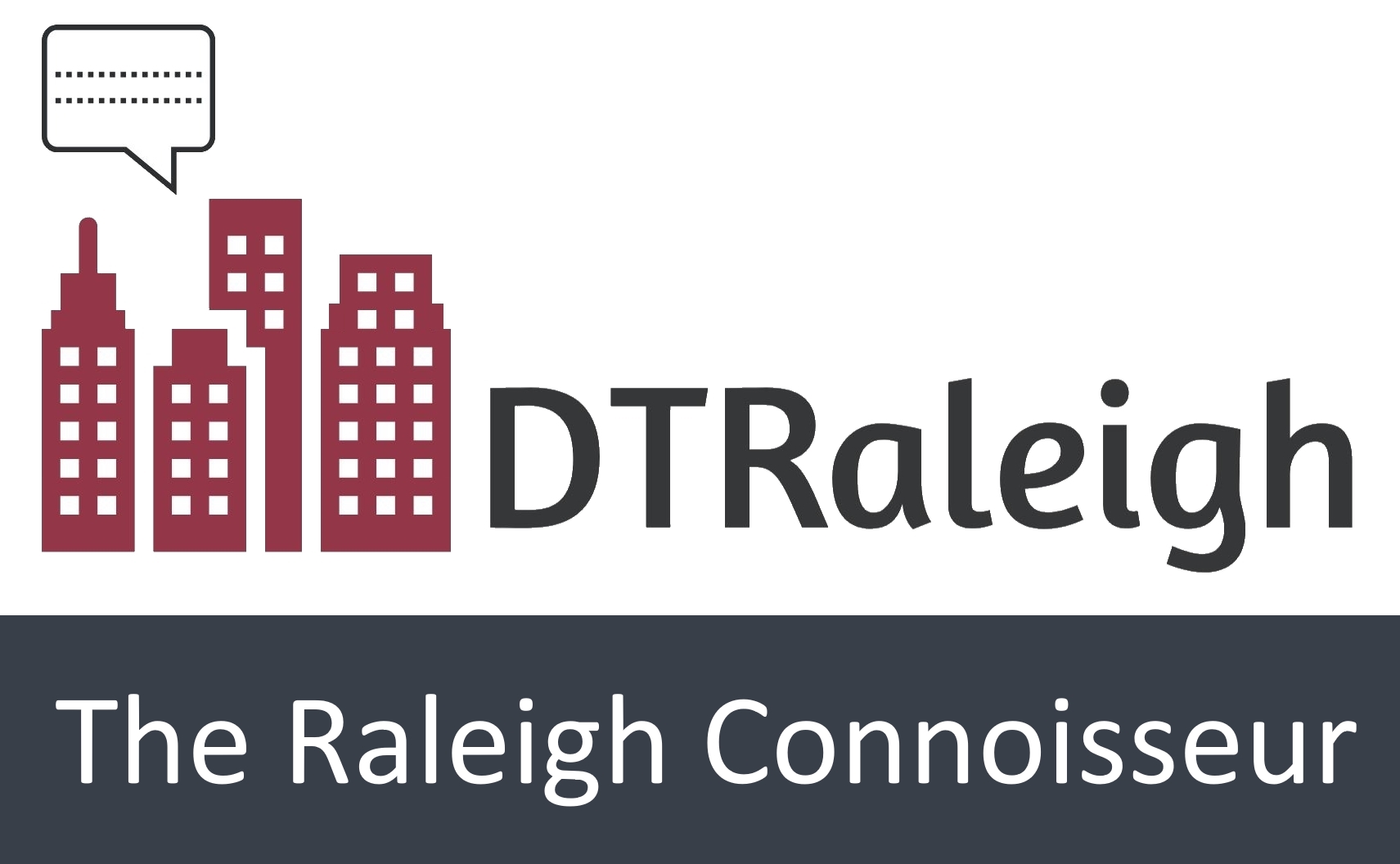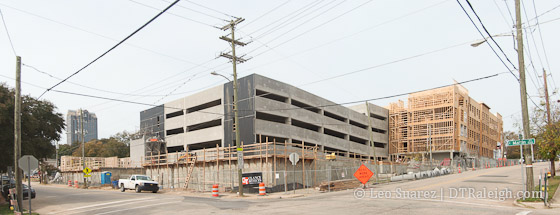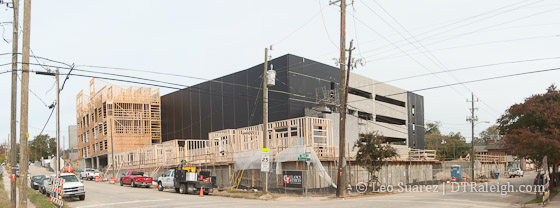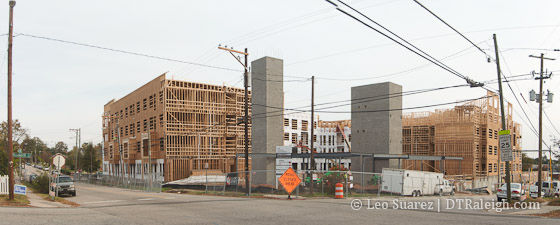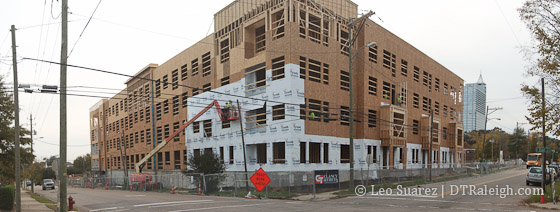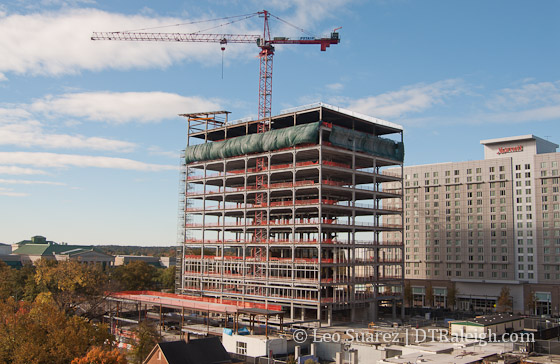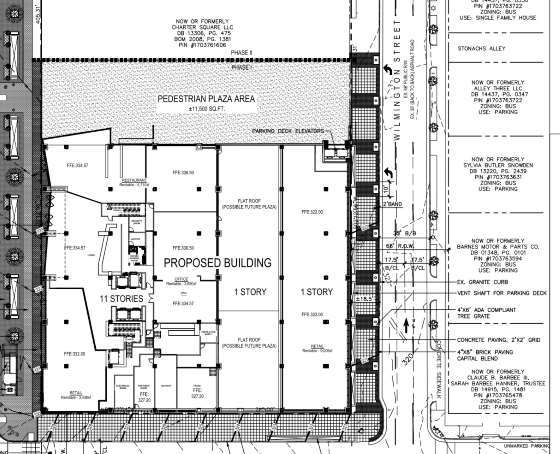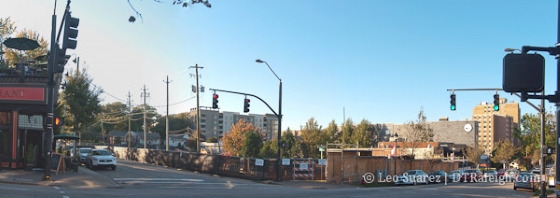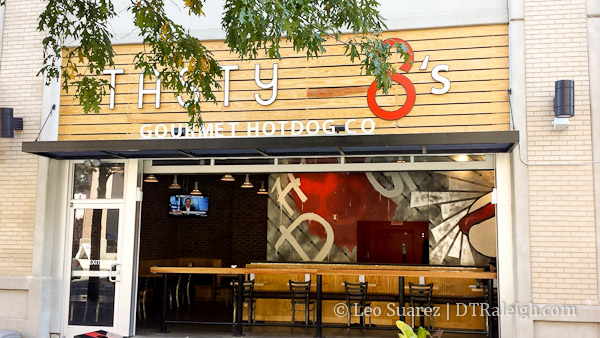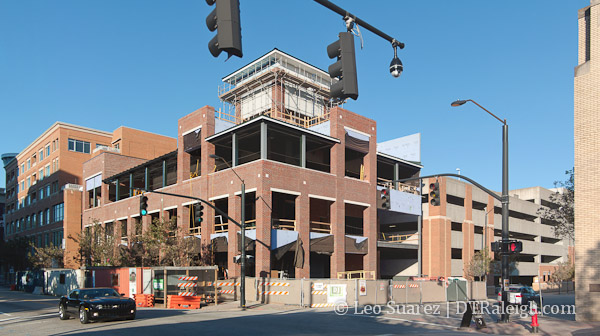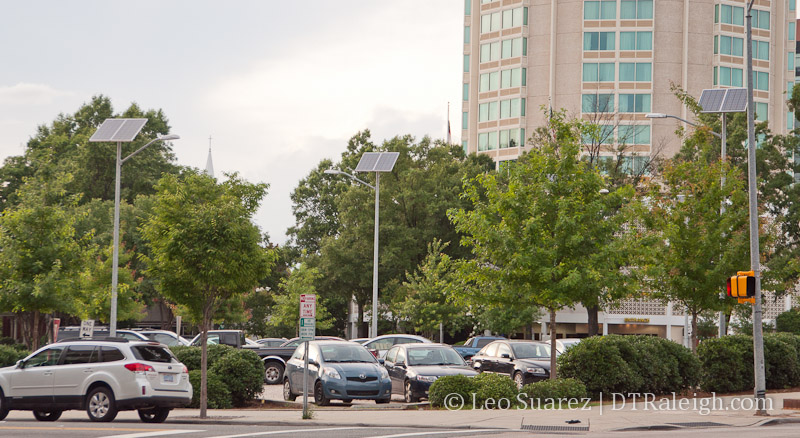
The parking lot at 301 Hillsborough Street
This story is as old as the blog itself so it is kind of exciting to revisit an “old” development. Articles in the news have reported that the city is in talks with interested developers to build on top of the city-owned property at 301 Hillsborough Street. From the North Raleigh News:
Raleigh staff have received at least two “substantial and serious offers for the property,” 1.2 acres of parking located two blocks west of the Capitol, according to a staff report.
Worth an estimated $3 million, the southwest corner of Hillsborough and Dawson streets soon could attract another sizable project.
“Whoever builds there, it’s going to be a fairly good-sized building,” said city attorney Tom McCormick.
*City again ready to sell 301 Hillsborough for high-density development via www.northraleighnews.com
Nothing is out yet so a little refresher to this story is appropriate at this time.
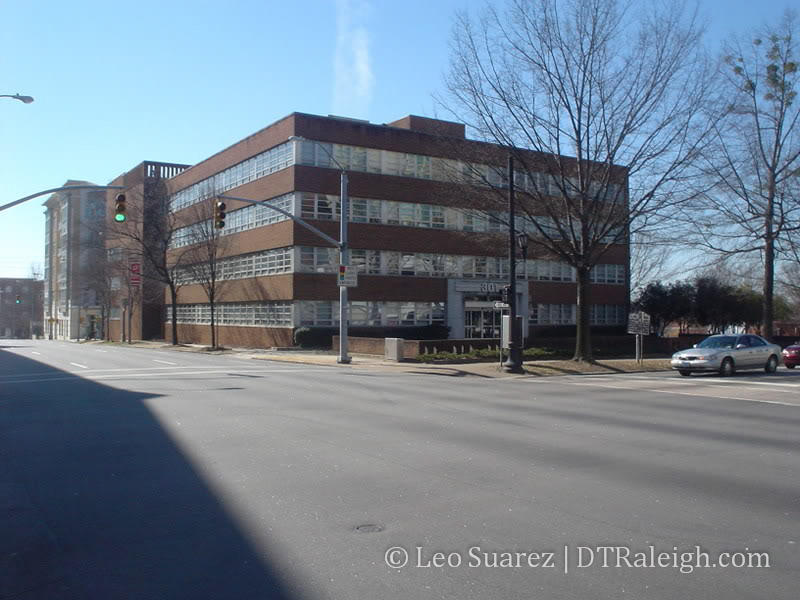
In 2007, plans for a 25 to 32-story tower named ‘The Hillsborough’ were out by the father and son developers, Ted and David Reynolds. This is the same team that brought us The Quorum Center.
The new tower was planned to be mixed-use with hotel, office, residential, and ground-floor retail. Plans and height flexed a little bit during that year but planning moved ahead enough to demolish the current building on site, shown in the 2007 photo above.
The cleared site sat empty for awhile. There were no changes about 12 months later as 2009 came upon us.
As with a few other downtown projects, the 2009 recession affected The Hillsborough most likely and no progress was made after this. Later that year, the city filled in the hole and it eventually became a parking lot in order to generate some revenue. Campbell Law School, located across the street, uses this lot for parking today.
Speculation on the site’s future could go in all sorts of direction here so this post acts as an open thread for RalCon commenters.
I’ve always seen Hillsborough Street as a central location to downtown districts so a hotel could be an option. There’s easy vehicle access to the site using the Dawson/McDowell pair and it’s a short walk to the state government district, Fayetteville Street CBD, Warehouse District and Glenwood South.
There currently isn’t much office space along the Dawson/McDowell corridor but that doesn’t mean new space couldn’t be built.
Residential, as in apartment rentals, are never off the table it seems these days. Either way, a large parking component will likely be built here.
More to come in the near future.
